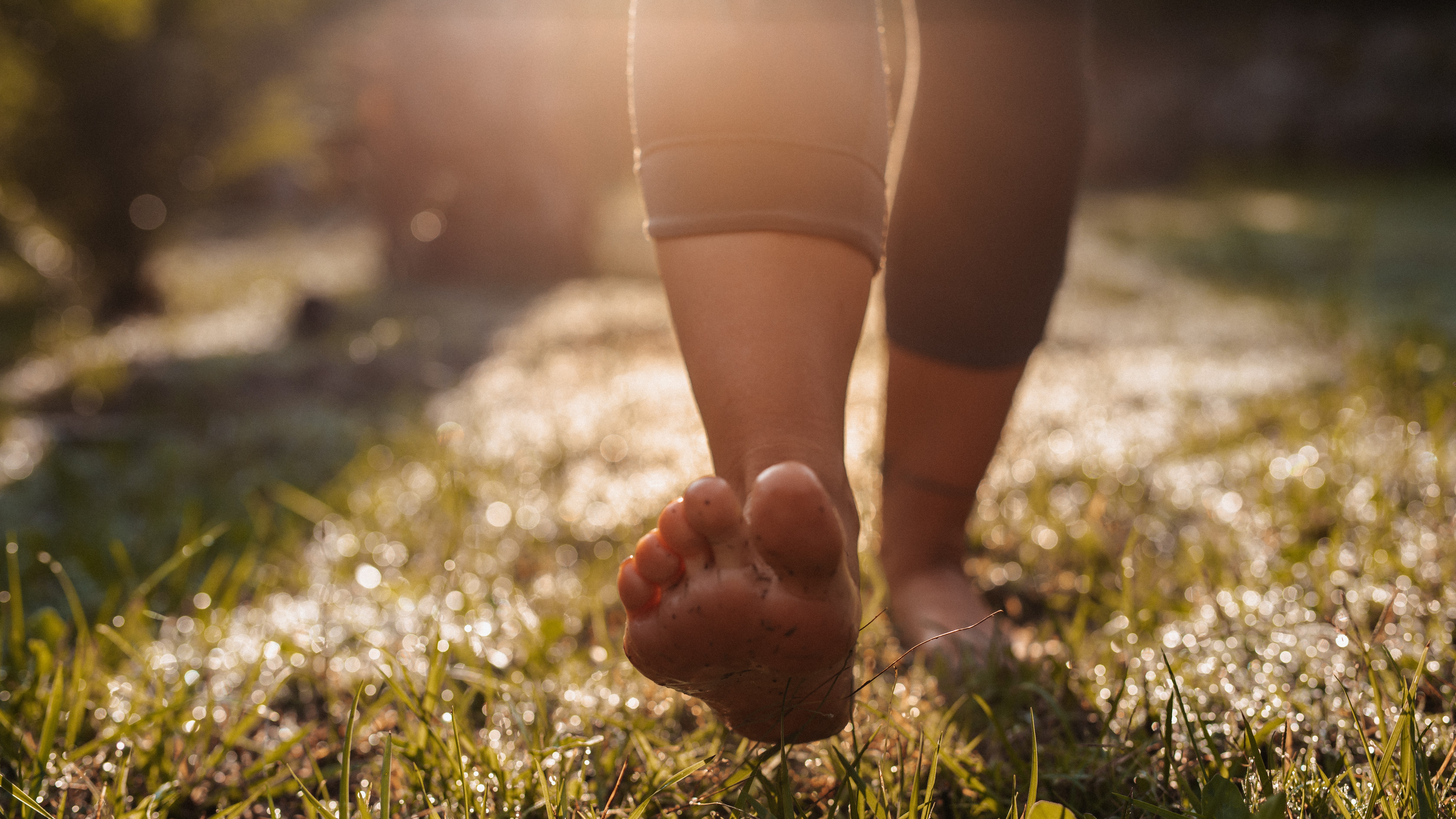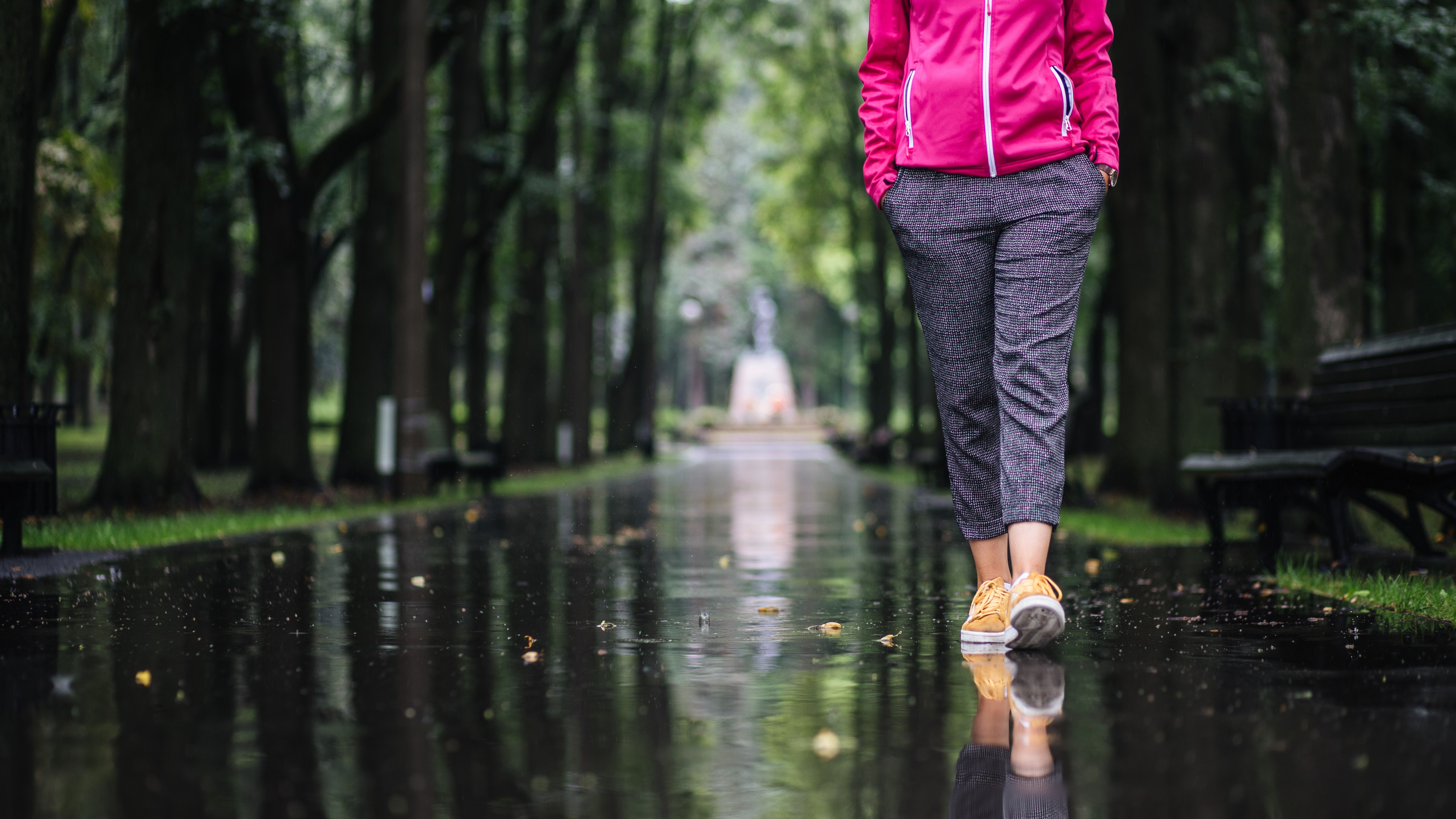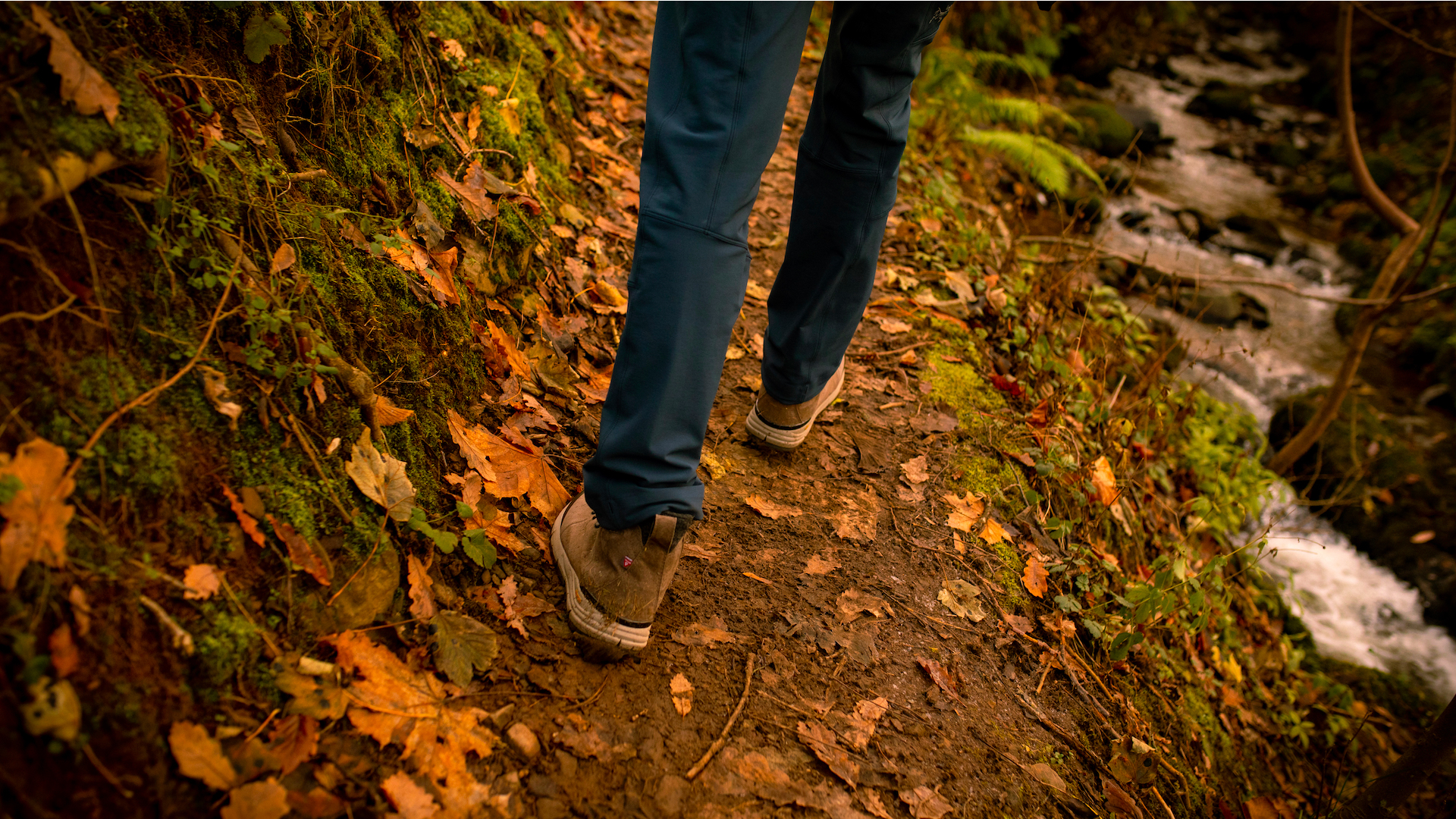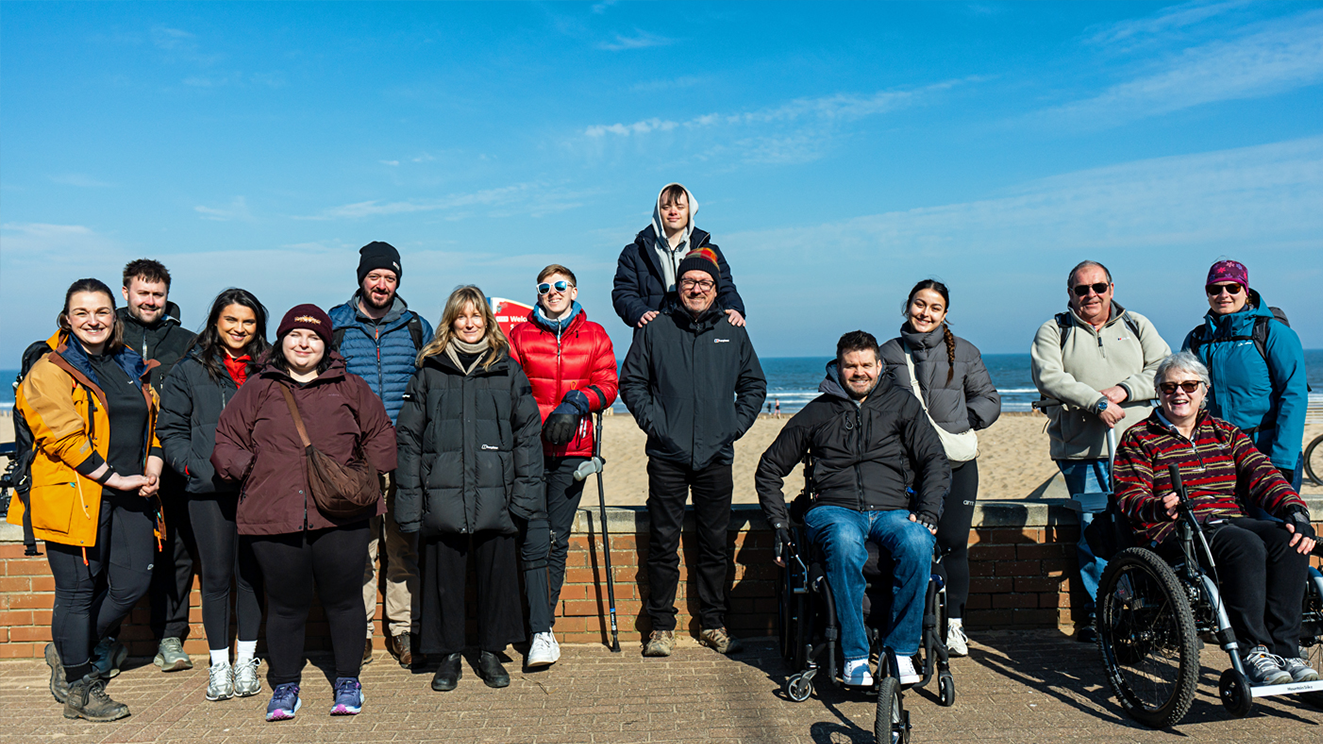How to do a walking meditation
Add a few minutes of stress-busting mindfulness to your hiking adventures

It’s a brisk fall day in the Catskills and I’m walking through the woods, slower than I’ve ever walked in my life. Moving in a circle, I pay attention to the lifting of my foot, and watch it as I move it through space then place it on the earth in front of me. I lean forward, pressing off my back foot and observe the same arc as I bring that foot forward. With each step, I’m aware of the crunching of the leaves underfoot and the way the light breeze grazes my skin and rustles in the bare trees above.
I have decades of experience in both meditation and walking outdoors, but this is my first time doing a walking meditation. I’m here with the 13 other participants of a yoga teacher training course and our teacher, Rudra, guides us, evenly spaced, in a circle around an outdoor statue depicting the Buddha. Walking meditation, also known as Kinhin, is a practice rooted in the Buddhist tradition that applies the practice of mindfulness which is often performed in a seated position to slow walking.
When you typically for for a walk, whether you're hiking or just getting to work, the chances are that your mind is elsewhere. If you’re simply on your morning commute, you might be listening to music or on the phone. Hopefully you’re doing neither of those things on the hiking trail, but you still might be preoccupied by the views, wondering how long this climb is going to go on for, or just lost in a world of thought. These can all be lovely aspects of hiking, but rarely are you immersed in simply the act of walking and being in your body – at least, rarely do you do it without judging it, and terming it as difficult and hot, or congratulating yourself on how pleasurable it all is.

In a nutshell, the concept of mindfulness is learning to pay attention to what is happening in the present moment without judgment or inner commentary. In that way, you approach your experiences with a sense of openness and awareness of your thoughts and feelings as they arise. Creating a little space between your thoughts and your reaction to them can provide more room to choose your response and many practitioners find that it helps them to effectively take the reins over their mind and actions, otherwise known as self-regulation. Mindfulness practices have been clinically correlated with improved well being and reduced psychological symptoms of stress.
But sitting still in meditation isn’t easy, and for some of us, it’s nearly impossible. Furthermore, if you love the outdoors, you might be looking for ways to combine your meditation practice with nature, and walking meditation can be a great way to do both and get the benefits of green exercise while you’re at it. Since I had my first experience of walking meditation, I often implement it in my hiking retreats in Yosemite National Park. The next time you’re out in your hiking boots, consider taking a pause from your fast-paced scramble to the summit and trying a walking meditation to clear your mind and get back to the present.
Here's a simple guide to how to do it!
1. Pick the right spot
Pick a reasonably clear and flat area where you can walk in a wide circle or forward and backward between two points, such as two trees. One of my favorite places for walking meditation is next to Mirror Lake in Yosemite because there are so many open, flat areas. Meadows, forest clearings, beaches and flat summits make great spots and ideally, you want to have enough room to be able to take at least 15 steps in one direction or in a circle. It doesn’t have to be perfect, but try to avoid areas where you might have to scramble or there are lots of other hikers trying to pass through.
Advnture Newsletter
All the latest inspiration, tips and guides to help you plan your next Advnture!

2. Start walking
It’s helpful to set a timer for how long you want to walk so that you’re not counting. Though there’s no rule about pace, it’s easier to focus on the details of walking when you slow it down. Drop your hands by your sides or clasp them behind your back, relax your face, neck and shoulders, lower your gaze and begin.
- Lift your right foot and reach it forward.
- Roll forward onto the toes of your left foot.
- Softly plant your right heel on the earth in front of you.
- Shift your weight into your right foot then lift your left foot and slowly bring it forward.
- Continue this cycle.
If you’re walking forwards and backwards, pause for a second or two when you get to the end then slowly turn round and walk back the way you came.

3. Focus your attention
As you walk, breathe gently and pay attention to each part of every step: the lifting, the shifting, the lowering and the rolling forward. Don’t try to block out external sounds of birds and bees, but try to notice them without assigning labels or meaning. Thoughts and feelings will come and go – that’s just the nature of your mind – but when they do, simply notice them, then return your attention to the act of walking. Notice any sensations in your body but try not to characterize them as good or bad.
4. End your meditation mindfully
When your timer sounds, complete the circle or length you’re on then pause for a minute or two with your eyes open or closed, taking a moment to notice how you feel before resuming regular activity.
Julia Clarke is a staff writer for Advnture.com and the author of the book Restorative Yoga for Beginners. She loves to explore mountains on foot, bike, skis and belay and then recover on the the yoga mat. Julia graduated with a degree in journalism in 2004 and spent eight years working as a radio presenter in Kansas City, Vermont, Boston and New York City before discovering the joys of the Rocky Mountains. She then detoured west to Colorado and enjoyed 11 years teaching yoga in Vail before returning to her hometown of Glasgow, Scotland in 2020 to focus on family and writing.

